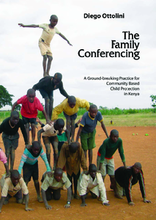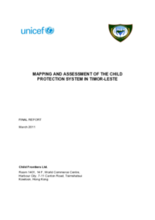Demographic Data
|
Sources: World Bank, UNICEF, UNDP HDR 2015, DHS 2013 |
Displaying 13171 - 13180 of 14555
This is a retrospective exploratory study looking at 73 family group decision-making conferences for chidlren referred to institutional public services in Kenya.
An organization called Door of Hope has offered a “baby bin,” where parents can anonymously drop off babies, in Johannesburg since 1999, says this article from BBC News.
This Conference explored a range of workforce development strategies, including strategies for planning, training, and supporting the workforce incorporating lessons learned from Health Systems Strengthening and Human Resources for Health Initiatives as well as other human and institutional capacity building and training efforts.
The core aim of this programme is to contribute to the development of a platform that will support better understanding of the routes from intervention to outcomes for vulnerable children in Scotland through utilising administrative datasets and longitudinal research.
Republic of Moldova, Parliament, Law No. 123 on Social Services entered into force 3 March 2011.
This mapping and assessment reviews the framework for the child protection system in Timor-Leste, to consider whether the blueprint is designed with a clear vision and if the system is implementable and sustainable.
This report analyzes how a small sample of 12 children’s homes in England achieved and sustained outstanding status over a period of three years. The report describes and interprets what inspectors found to be the reasons for success in these outstanding homes and how the providers themselves explained the factors that contribute to outstanding care. The experience of the children and young people who live in these homes is also a key element of the report as it is, of course, the real hallmark of quality.
Street Action and the Centre of African Studies has launched Including Street Children: A situational Analysis of Street Children, the first report of its kind documenting the physical and psychosocial health of street children in Durban, South Africa.
This report reviews the role and practice of State-established child protection residential institutions in Indonesia focused on providing services for children defined as being in need of special protection under the Child Protection law, in particular child victims of abuse, neglect or exploitation including victims of trafficking.
This video from ABC News Australia reports on a hospital in Japan that is taking in unwanted newborns from around the country, sparking debate on whether the hospital is helping mothers or encouraging abandonment.







